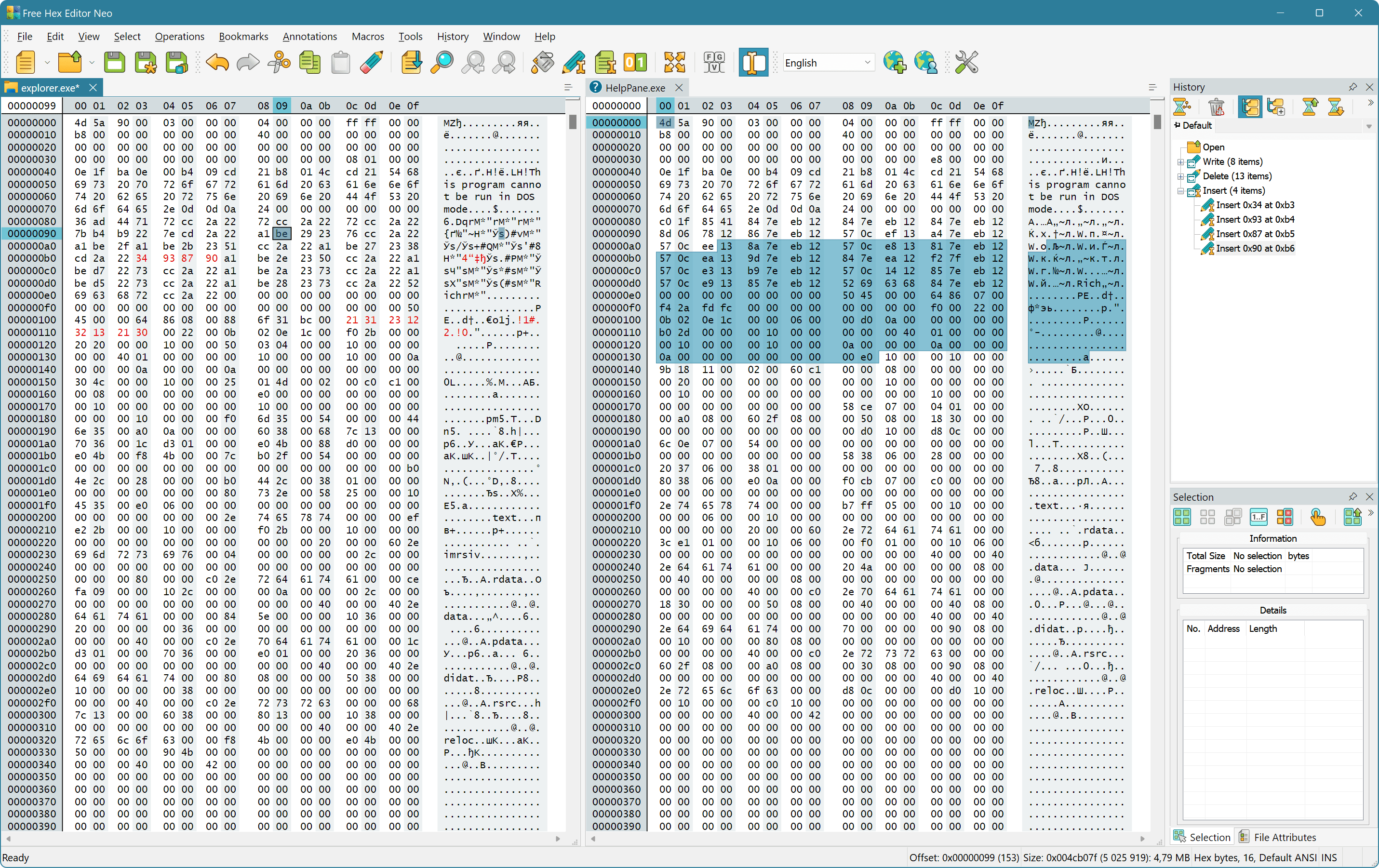

For example, to find Hello, you can search for either the string Hello or its hexadecimal value, 48 65 6C 6C 6F. You can search for either ASCII strings or hexadecimal bytes. The Binary Editor accepts changes automatically when you close the editor. The printable characters are ASCII values 32 through 126. Extended characters are displayed as periods in the right panel ASCII value section of the Binary Editor. Only certain ASCII values are represented in the Binary Editor (0x20 through 0x7E). To open the Binary Editor on an existing file, go to menu File > Open > File, select the file you want to edit, then select the drop arrow next to the Open button, and choose Open With > Binary Editor.īinary data for a dialog box displayed in the Binary Editor The dropdown selection in the New file dialog isn't available in Visual Studio 2019, but is available in Visual Studio 2022. To open the Binary Editor on a new file, go to menu File > New > File, select the type of file you want to edit, then select the drop arrow next to the Open button, and choose Open With > Binary Editor. The Binary Editor is not available in Express editions. Use the Binary Editor only when you need to view or make minor changes to custom resources or resource types not supported by the Visual Studio environment.

You can also use the Find command to search for either ASCII strings or hexadecimal bytes. The Binary Editor allows you to edit any resource at the binary level in either hexadecimal or ASCII format. Incorrect editing could corrupt the resource, making it unreadable in its native editor.

Editing resources such as dialog boxes, images, or menus in the Binary Editor is dangerous.


 0 kommentar(er)
0 kommentar(er)
